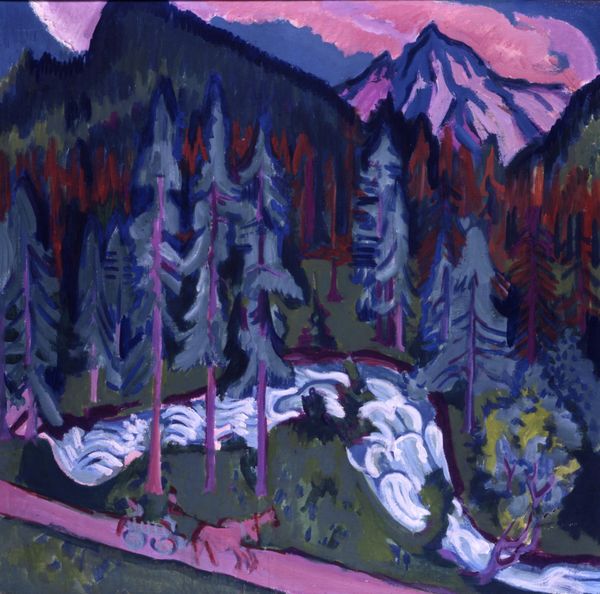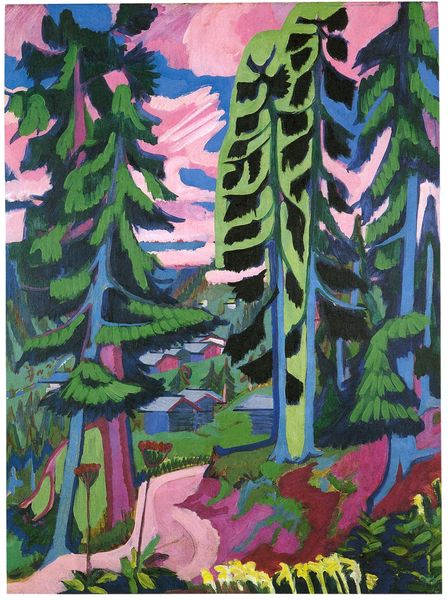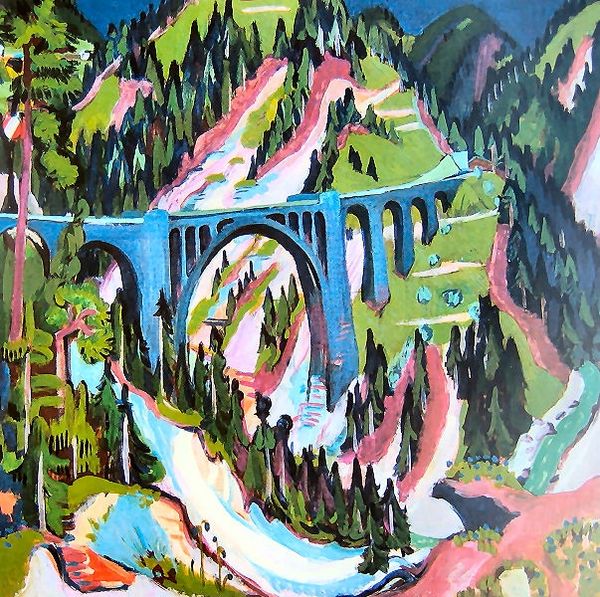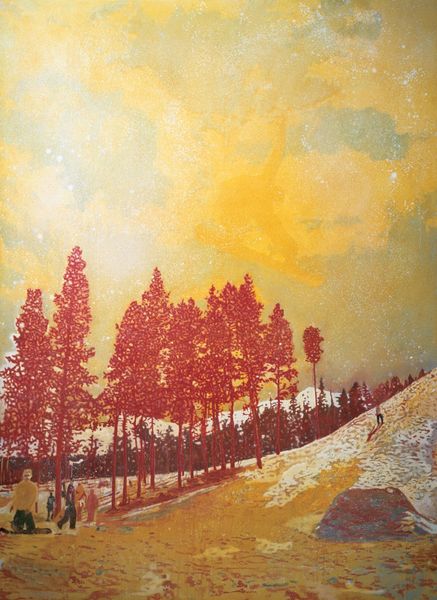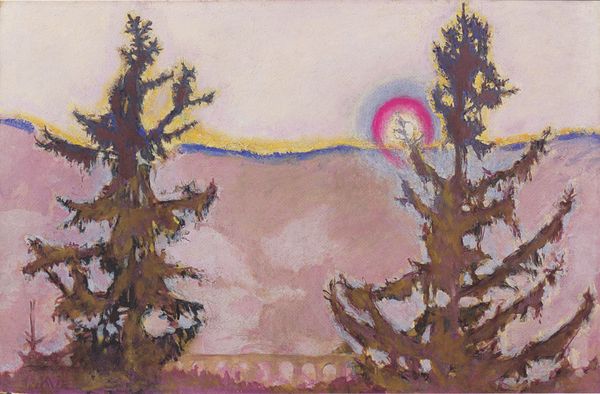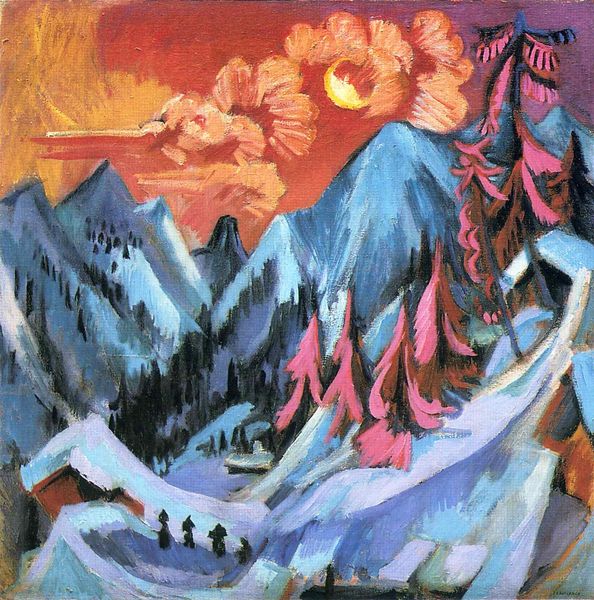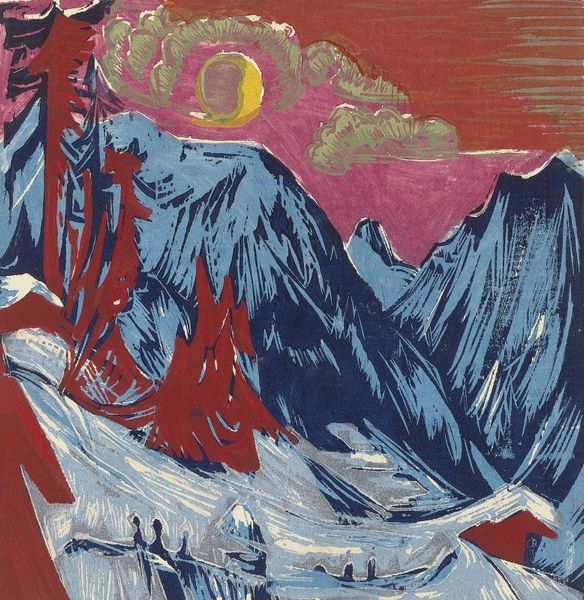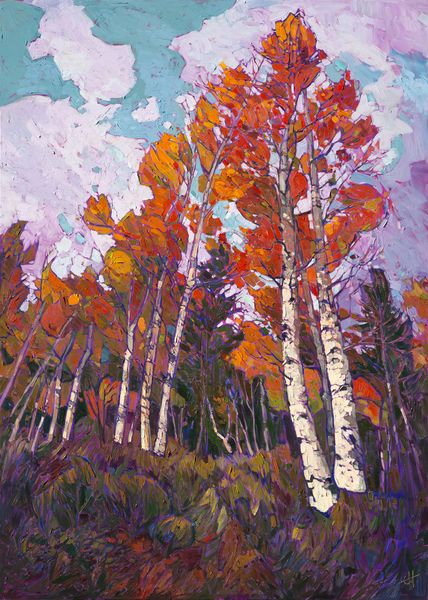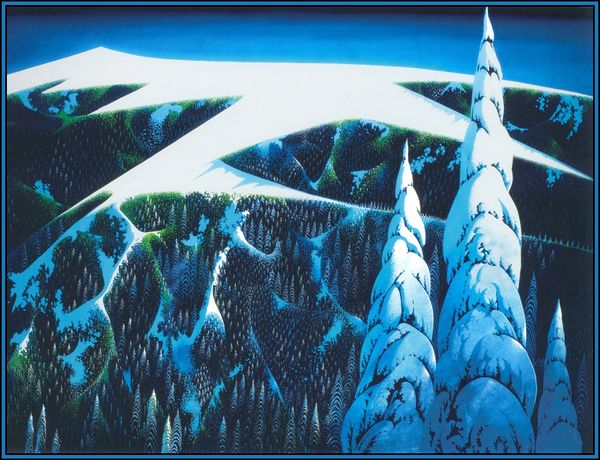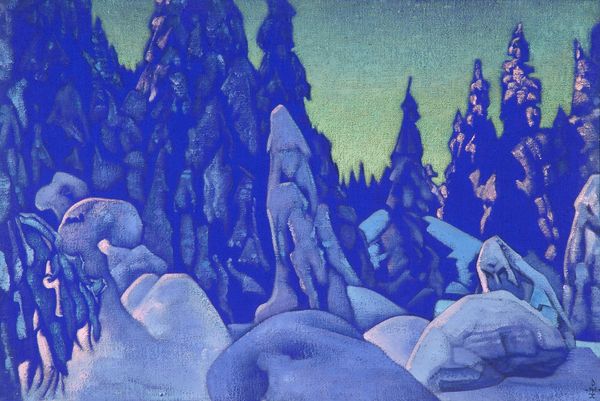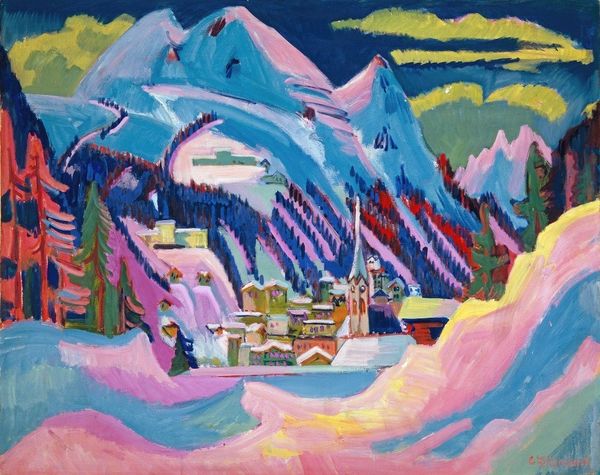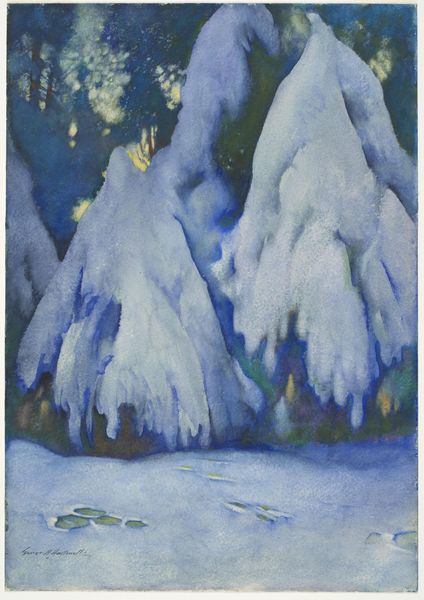
Dimensions: 50 x 50 cm
Copyright: Public domain
Editor: Here we have Ernst Ludwig Kirchner’s “At the Forest Edge,” painted in 1936. The color palette is so striking! What feels like a very traditional subject is depicted in vivid, almost unsettling pinks and blues. What do you see in this piece? Curator: I see the weight of cultural memory. Kirchner, a leading figure in German Expressionism, was deeply affected by the sociopolitical turmoil of his time. Although he retreated to the Swiss Alps later in life, we can recognize how he translated internal psychological states through color. Notice how the vibrant pink, though beautiful, clashes unnervingly with the traditionally calming forest scene. It doesn’t quite 'fit', does it? Editor: No, it doesn’t. It's like a scream in the landscape. The bright colors remind me of Pop Art. Curator: In a way, it foreshadows that movement's use of color for shock and social commentary, but there's an anxiety here that feels distinctly German Expressionist. Consider the forest as a symbol. Forests in Germanic folklore are places of both refuge and danger, but in the context of pre-war Europe, could the vibrant and displaced pinks signify an intrusion, a disruption to the natural order? Editor: So, the painting is more than just a landscape; it's a commentary on the unease of the time? Curator: Precisely. It carries an emotional weight, reflective of Kirchner's experiences and the collective consciousness of a nation on the brink. We should keep asking what continuity exists between how natural forms take on symbolic power across history. Editor: I never would have considered it that way just looking at the bright colours. This has given me so much to think about! Curator: Indeed. The image has lingering qualities, an almost disquieting beauty and potent symbolism!
Comments
No comments
Be the first to comment and join the conversation on the ultimate creative platform.
